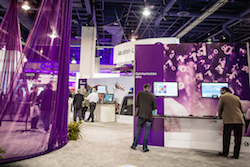Alcatel-Lucent has launched a new portfolio of LTE access technologies aimed at helping operators transition to next-generation network architectures such as 5G and NFV.
The vendor’s LTE RAN portfolio includes Alcatel-Lucent’s 9926 eNodeB, a new digital baseband unit (BBU) supporting up to 24 “fully loaded” radio cells and 16,000 users in a single unit.
A-L said the BBU was configured for both LTE TDD and FDD standards to help operators maximise existing radio spectrum for high-bandwidth LTE services, while also offering 50 percent reduced energy consumption.
The vendor added the unit was designed to provide operators with a “smooth evolutionary path” to virtualised RAN infrastructure and 5G networks, while also being compatible with existing BBUs to help telcos maximise existing investments in radio access technologies.
The portfolio also includes a new modular radio frequency platform featuring both wideband and dual-band capabilities, which A-L said provided support for multi-carrier, multi-band deployments, allowing operators to make better use of fragmented spectrum in urban environments.
Glenn Booth, SVP and General Manger of Alcatel-Lucent’s LTE Business Unit, said: “Understanding our customers’ biggest challenges and delivering solutions to meet them better than anyone else is our mission. Our refreshed RAN portfolio is targeted to meet exactly those challenges by addressing LTE networks densification particularly in urban environments in a sustainable and cost effective way.
“This new platform also sets the stage for a smooth transition to a virtualised RAN and, ultimately, to a 5G family of solutions.”
Ericsson has also been busy upping its next-gen portfolio after making a number of announcements this week, including a multi-standard 100GE router and a new modular radio architecture.
Read more:
Alcatel-Lucent reveals compact metro cells in HetNets push
A-L to develop “aesthetically pleasing” smart cities solution with small cells



